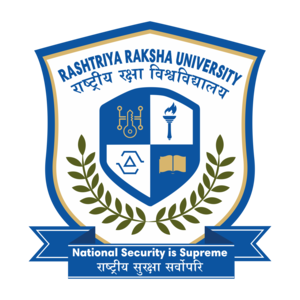
The Adaptations Made By Malaysia to Climatic Changes- An Inspiration for Every Country
The Adaptations Made By Malaysia to Climatic Changes- An Inspiration for Every Country
While the elements of adaptation may have been captured in the National Policy on Climate Change and the Malaysia Plans, they are not as conspicuous as those of mitigation. This could make Malaysia highly vulnerable to the impacts of climate change.
Back in 2011, the areas requiring adaptation have been identified, namely drought, flood and erosion, agriculture, health, forest, and biodiversity as well as a coastal marine habitat. Nonetheless, gaps in adaptation have yet to be filled. Khailani and Perera (2013) identified a lack of participatory planning which was evident in the inadequacy of the planners to address critical needs of people in relation to flood hazards for instance, in defining rescue and evacuation routes and reducing the risks of flooding on housing, transportation, infrastructure, and utilities. On the positive side, the planners have managed to identify vulnerable zones for buildings and safe zones for emergencies as well as a natural line of defense in planning. The study recommended active physical planning involving consultation with stakeholders in the preparation of local development plans by the Federal Department of Town and Country Planning, to incorporate disaster resilience for adaptation to climate change. With heightening concern towards climate change, there is a danger that any strategies taken by the government to cope with climate change impacts could be viewed as adaptation without really considering the projected climate trends.
The Health Ministry initiated the Vector-Borne Disease Control Programme in 1986 which replaced the Malaria Eradication Programme in 1967. The Vector-Borne Disease Control Programme includes the control of not only malaria but other vector-borne diseases such as dengue, filariasis, typhus and yellow fever. Its existence has little relation to adapting to and future-proofing climate change but has been claimed to have such aim. Increasing awareness of the importance of adaptation has propelled participation of Malaysia in adaptation projects, for instance, the US Support Programme to the Coral Triangle Initiative to manage coastal and marine resources with biological and economic significance. The initiative also strengthens capacity for policy research on mainstreaming adaptation to climate change in agriculture and water sectors, via research and networking.
Malaysia also participated in the Asia Pacific Climate Change Adaptation Project Preparation Facility (ADAPT) to enhance accessibility to the funding of climate change adaptation and promote regional knowledge sharing.
With regards to flooding, the Department of Irrigation and Drainage (DID) Malaysia launched the official web of Public Infobanjir (flood information) which shows the alert and warning water levels based on the records of its flood gauges across the nation to facilitate emergency response. The Infobanjir is, in fact, a fruition of the flood forecasting and warning system program initiated by the DID under which the integrated flood and rainfall management (IFFRM) is also parked. The IFFRM comprises two major components, i.e. flood forecasting and monitoring of water resources particularly water quality, drought, and debris flow. It aims to mediate response to, hence reduce the impact of flood, in adapting to climate change (DID, 2018). The program also yielded a drought monitoring website (InfoKemarau) but a visit to the website does not reveal much information available to the public on the occurrences or projections of droughts. The Malaysia Meteorological Department posts warning of earthquake and tsunami, strong wind, rough sea, thunderstorm, heavy rains and tropical cyclones on its website in light of the increased frequency of extreme weather events associated with climate change. The disaster management center of the Public Works Department Malaysia also maintains a website which merely relays weather warnings from the Meteorological Department (CFE-DM, 2016). The adoption of the Integrated Water Resources Management (IWRM) marks an important adaptational initiative of Malaysia leading to the genesis of the National Water Resources Policy in March 2012.
The IWRM stresses on efficient water governance through policy, institutions, participation, information, technology, and finance. Major achievements made after the adoption of IWRM include passing of laws to enable efficient water supplies and sewerage services, the establishment of National River Register and completion of 12 river basin management plans, as well as publication of the urban stormwater management manual. Besides, achievements such as completion of the national study for the effective implementation of IWRM in Malaysia and implementation of IWRM Best Management Practices are also worth mentioning. By 2013, the IWRM had permitted 95.1% of the Malaysian population to have access to piped drinking water in comparison to 94.2% in 2010, while increasing the irrigated area.
At the individual level, the fishermen in Malaysia have portrayed different levels of social adaptation. The fishermen survey showed highly adapted environmental awareness, attitudes, and beliefs, and local environmental knowledge through their knowledge of climate change was limited. The fishermen however developed strong attachment towards the location of livelihood and their jobs. They were not sufficiently accommodative to new skills and opportunities. Many adopting strategies have been proposed to cope with climate change but a major shortcoming of the strategies is a lack of connection to the strategies that have already been or are being implemented, hence not addressing the gaps. In coping with the impacts of climate change on real estate, the board had already proposed the development of resilient water, power systems, and services. This has already been captured in the IWRM.
Some strategies could be over-general, hence constraining their operationalization, for instance upgrading the poor structure and redesigning stormwater drainage. Adaptation of paddy planting is a major concern with rice being the major staple of Malaysians. Eight granary areas in Malaysia have been classified as permanent paddy producing areas to ensure a sustainable level of rice production. Researchers recommended the cultivation of temperature-tolerant cultivars, the involvement of the private sector to delineate commercial-scale paddy production zone and cultivation of shorter-maturing varieties. There has been an attempt to associate adaptation to ethnic-related paddy yield which underscores the need to facilitate the adaptation of the low-yielding group in Malaysia. This form of adaptation is more appropriately viewed as an additional effort to increase the capacity and competence of the low-yielding group than coping with the overall impacts of climate change on regional agriculture. With a multitude of adapting strategies proposed in sectoral climate change studies, it can generally be concluded that adaptation based on future projections of the climate change which also addresses the current gaps by examining the adequacy of existing adaptation policy, planning and implementations would be beneficial.
By
Sayan Basak
B.Tech
Department of Polymer Science and Technology,
University of Calcutta
Additional References-
1. Fitzherbert, E.B., Struebig, M., Morel, A., Danielsen, F., Bruhl, C., Donald, P., Phalan, B., 2008. How will oil palm expansion affect biodiversity? Trends Ecol. Evol. 23, 538–545.
2. Gass, P., Hove, H., Parry, J., 2011. Review of Current and Planned Adaptation Action: East and Southeast Asia. available at:. https://www.cakex.org/sites/default/files/documents/East_SouthEastAsia_Adaptation_Action.pdf, Accessed date: 30 June 2019.
3. Kamaruddin, A.H., Din, A.H.M., Pa\'suya, M.F., Omar, K.M., 2016. Long-term sea level trend from tidal data in Malaysia. Control and System Graduate Research Colloquium (ICSGRC), 2016 7th IEEE, IEEE, pp. 187–192.
4. Khailani, D.K., Perera, R., 2013. Mainstreaming disaster resilience attributes in local development plans for the adaptation to climate change induced flooding: a study based on the local plan of Shah Alam City, Malaysia. Land Use Policy 30 (1), 615–627.
5. Khor, M., 2015. Lessons from the great flood. The Star Online. 19 January available at:. https://www.thestar.com.my/opinion/columnists/global-trends/2015/01/19/lessons-from-the-great-floods/, Accessed date: 30 June 2019. Kwan, M.S., Tangang, F., Liew, J., 2013.
6. Projected changes of future climate extremes in Malaysia. Sains Malaysiana 42 (8), 1051–1059. Laudicina, P.A., Peterson, E.R., 2015.
7. Strategic Issue Assessment: Seven Emerging Markets are Poised to Outperform Their Peers – and They May Not Be the Ones You Think. available at:. https://www.atkearney.com/web/the-purchasing-chessboard/article/-/ asset_publisher/9AutfSQfJm6Y/content/-2020-seven-growth-economies/236833.
8. Laurance, W.F., Koh, L.P., Butler, R., Sodhi, N.S., Bradshaw, C.J., Neidel, J.D., Consunji, H., Mateo Vega, J., 2010. Improving the performance of the roundtable on sustainable palm oil for nature conservation. Conserv. Biol. 24 (2), 377–381. Lee, Y.L., Ahmed, O.H., Jalloh, M.B., 2018.
9. Brief review on climate change and tropical peatlands. Geoscience Frontiers available at: https://www.sciencedirect.com/science/article/pii/S1674987118300343, Accessed date: 30 June 2019.












